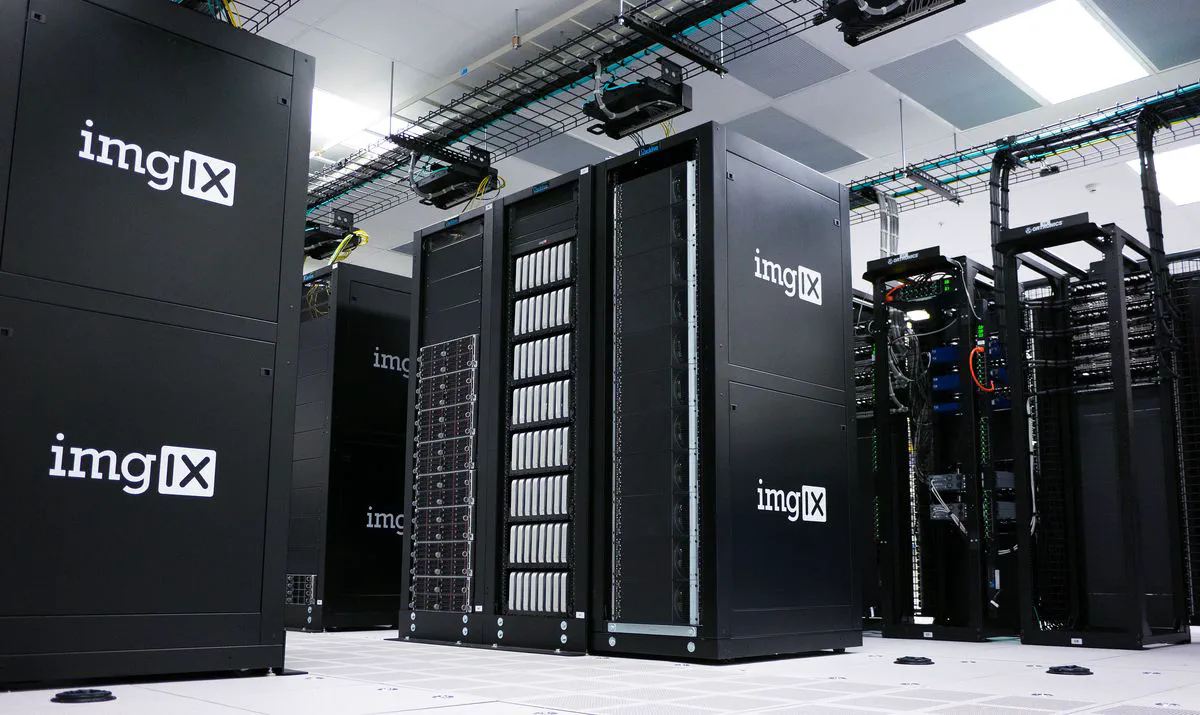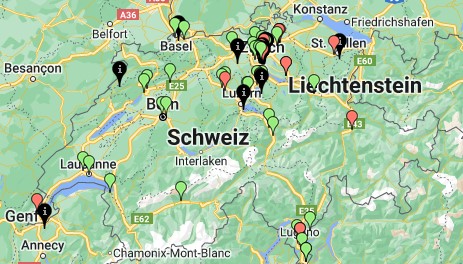Infrastructure Basics (PC Module 1)
 Photo by imgix on Unsplash
Photo by imgix on UnsplashInfrastructure Basics
Datacenter classifications
If you have a company a you have decided to save you data somewhere you probably will need a datacenter. But because of the high costs as well as the big amount of know how you need to maintain your own most companies rely on other companies that are managing a data center for them.
But then the next important step/question for you as a company is what data center you will take. There are over 100 only in Switzerland and over X thousands distributed over the whole globe. The two main factors that you have to keep an eye on:
- Which data center best matches your needs
- What are the standard levels of the data centers

Overview of datacenters that are located in Switzerland
Tier standards
To distinguish the data centers in your decision making you will refer on to the tier standards invented in 1990. With this the provider needs to set a minimum of services he offers you. Also the downtime decreases as well as the data will be faster/ more efficiently available. This different tier standards consist of (every tier builds on the one before):
- Tier 1
- Lowest Standard
- Single UPS (Uninterrupted Power Supply)
- Cooling 24/7
- Engine generator
- No concurrently maintainability
- Tier 2
- Partial power & cooling redundancy
- Tier 3
- Full redundancy of all components (n+1)
- Multiple fire sections (not everything would be affected by one fire -> encapsulated)
- Partial conc. maintainability
- Tier 4
- Every process and every component of the data center is redundant
- Data protection stream
- No single failure shutdowns the system
- Redundant + Backup (2N+1)
- 96 hours power failure protection
- (Tier 5)
- Special tier inventend from SWITCH
- Should be an extension of tier 4
- 30 additional security features
But also the best tier standards still have some downtime per year. So the best way to still prevent your data 24x7x365 is to split it up and use a few different data centers (f.e. two tier 4 and one tier 3). My personal ideas for even more security would be:
- Self-produced energy (with the help of independent power supply)
- Geographically optimal location (so that you are not exposed to environmental influences like earthquakes, hurricanes, etc.)
- Good use of the terrain (e.g. natural cooling through deep position)
- Own security staff with special training
- High tech safeguarding through AI (facescanning, biometrical scan, camerarecognition etc.)
Data center types
The data centers not only differ in their tier standards they also get differentiated by their types. The most popular ones are:
- Enterprise
- Colocation
- Managed Services
- Micro
- Data center types
- Enterprise
- Advantages
- Sovereignty
- Disadvantges
- Price
- Colocation
- Advantages
- No fix cost (only for usage)
- Disadvantges
- Dependencies
- Managed Services
- Advantages
- No hardware maintenance
- Fixed prices
- Disadvantges
- No sovereignty
- Price can be increased
- Micro
- Advantages
- Low latency / high availability
- Disadvantges
- CostData center components
Data center components consist of the following categories:
Power
Network
Cooling
Security
Fire protection
Power
This one is the most essential component of a data center. It has to be available 24x7x365 otherwise the storages, disks, networks etc. wouldn’t run. To make this possible data center often have big concepts which defined how they have to build their buildings not only but also in favor of their power supply.
This includes redundant power supply, own power generators, multiple power circuits and a UDP. The UDP mostly consists of batteries. They will switch automatically as soon as through some error the racks can’t get anymore energy.
Inside the racks there are also various power supplies managed through so called PDUs (Power Distribution Units).
Network
To also enable the hosted data storages getting access to the outer world not only for interacting with the data (company applications) but also to make them available day and night. To secure this access different cable and connectors are used. They mostly differ in speed, range and prices.
| Type | Max. Speed | Category | Max. Length | Usage | Connector |
|---|---|---|---|---|---|
| 100BASE-T | 100 Mbit/s | Cat 5 | 100 m | Residental homes | 8p8c, RJ45 |
| 10GBASE-T | 1 Gbit/s | Cat 6 | 55 m | Commercial buildings | 8p8c, RJ45 |
| 10GBASE-T | 10 Gbit/s | Cat 7 | 100m | Core infrastructure | GG45, TERA |
| 10GBASE-T | 25-40 Gbit/s | Cat 8 | 30 m | Data centers/ Server rooms | GG45, TERA |
But not only cables are important for the network in a data center. For example there are also DAC, Firewall, Router, Switch or Rack.
👉 SFP (Small Form-factor Pluggable)
They are used to connect network devices with a copper or fiberglass cable. They differentiate in amount of channels, data speed and
| Type | Max. Speed | Compatibilty | Max. Length | Variations |
|---|---|---|---|---|
| SFP | 1 Gbit/s | Fiber, Twisted Pair | 160km | cSFP |
| SFP+ | 10 Gbit/s | Fiber, Twisted Pair, DAC | 100m | SFP28/56, SFP-DD |
| QSFP | 4 Gbit/s | Fiber, DAC | 100m - 10km | QSFP+, QSFP28/56, QSFP-DD |
👉 DAC (Direct Attach Copper)
They directly connect ports with through a short copper cable. The best use cases for them is for Switches/Routers in data centers because they are efficient and cost effective.
👉 Firewall, Switches & Routers
I already explained these terms in my Module 3 about networks. But I briefly want to mention their use case in a data center.
The firewall does of course secure the whole data center with specific rules and prevents in most cases that the data can’t be affected or even stolen by attackers over the internet (with ransomware, trojaners or malware). Meanwhile the routers enable the connection to the outer world with forwarding the packages from one network to another. And switches are extremly often use in data centers. Their useage is of great importance due to all the different devices and ports which have to been connected to each other.
👉 Rack
Racks always getting used in data centers. It’s a box to store the heavy servers and disks in a easy and fast managable way. They have normed sizes in all three dimensons height (24U/42U so called rack units), width (19 inches) and depth (36, 42 or 50 inches).
With all these big amounts be it cables, servers or switches an appropriate cable optimization is key. With different colors they getting sorted and made recognizable. Further they seperate the power supply to the two different redundant electricity sectors.
Cooling
Cooling is another really important component of data centers. In fact it needs a lot of sphisticated architecture to make it efficient. The servers in the racks need always cool air and the generated hot air needs to be deducated. This is achieved through the arrangement of the racks. Therefore a hot and a cold aisle (in the mid of the 2 rackrows is cooled air and on the outside the hot air which is deducted) getting provided.
The waste heat can be used to heat neighborhoods or provide your own building with some heat in the winter. Further if you feed the nearest electricity plant where it is possible to convert the heat back into electricity. To cool everthing down in the data center there are differen way:
- Liquid cooling
- Air cooling
- Raised floor platforms
- Hot and cold aisle containment
- Using AI for regulating the temprature
Security
Also you shouldn’t forget about the security. A data center not only provides software based security like e.g. a firewall it also has a lot of physical security features to make it a safe place.
Therefore you will find safety features like special entry cabinets, verification entries with biometrical analysis, splited rooms, observing cameras, monitoring staff etc. This is made so that unauthorized people can’t get access to the data center and it’s hardware.
Fire protection
Last but not least one of the dangers in regard to hosting a data center is that through all the heat produced its easy that something can overheat and then even produce a fire. It doesn’t helps you much to have a constant energy supply and internet if your hardware is destroyed by a fire.
That’s when fire protection comes into play. Provider of data centers commonly have rooms divded by function to ensure if a fire breaks out it can’t collaps to the other rooms of the building. Also their fire extinguishing mechanisms are kinda special.
You can’t just use normal water to extinguish the fire. Otherwise your hardware would also be destroyed by the water. So their solution is that they use a special gas which stifles the fire. But it still has some oxygen in it roughly enough that a human could still breathe if passed out before.